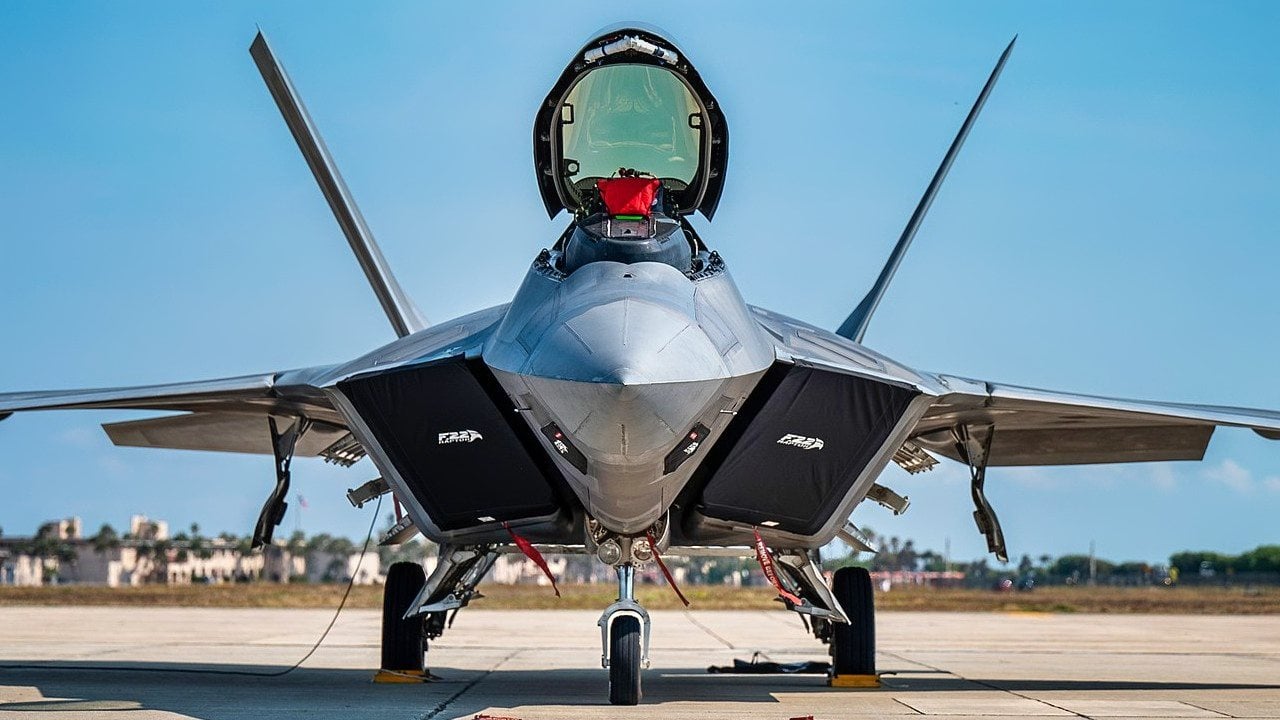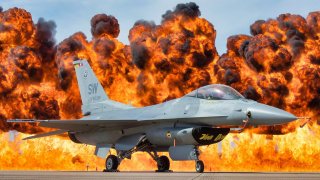The U.S. Military Keeps Moving F-16 and F-22 Fighters Closer to Iran
The United States Air Force has deployed additional F-16 Fighting Falcon jets from Germany to the Middle East, reinforcing its regional presence amid rising tensions with Iran.
What You Need to Know: The United States Air Force has deployed additional F-16 Fighting Falcon jets from Germany to the Middle East, reinforcing its regional presence amid rising tensions.

-The aircraft, part of the highly capable Block 50 series known for countering enemy air defenses, joined other advanced U.S. fighters like the F-22, A-10, and F-15E in the region.
-This expanded aerial fleet, including support from U.S. Navy assets, aims to strengthen allied defenses and counter potential threats from Iran. The new deployments come just after Israel conducted strikes on Iran, underscoring heightened security dynamics in the region.
More F-16 Fighting Falcons Have Arrived
The falcon is native to the Middle East, and it has been employed in hunting for eons. It is thus fitting that earlier this month the United States Air Force deployed an undisclosed number of its F-16 Fighting Falcon multirole aircraft from Germany to bases in the region to bolster its Middle Eastern presence.
On Friday, the U.S. Central Command (CENTCOM) posted on X.com, "U.S. Air Force F-16s from the 480th Fighter Squadron based at Spangdahlem Air Base, Germany arrive in the U.S. Central Command area of responsibility."
CENTCOM also announced, "At the direction of the U.S. Department of Defense, 9th Air Force (Air Forces Central) expedited the movement of these aircraft, along with multiple fighter, aerial refueling, and Intelligence, Surveillance, and Reconnaissance platforms."
The exact number of F-16s that were deployed closer to the Middle East hasn't been confirmed, but according to a report from Air & Space Forces magazine, the aircraft would be among the air service's "most capable F-16s, the so-called Block 50 jets that specialize in suppressing enemy air defenses."
The newly arrived F-16s could allow the Fighting Falcons previously deployed in the region from the 510th Fighter Squadron, based at Aviano Air Base, Italy, to rotate back to Europe. Those aircraft arrived at various locations in the Middle East in the spring.
Show Of Strength
In addition to the F-16 Fighting Falcons, the U.S. Air Force has deployed F-22 Raptor air superiority fighters, A-10 Thunderbolt II close air-support combat aircraft, and F-15E Strike Eagles to the region. The latter aircraft, from the 89th Fighter Squadron, Mountain Home Air Force Base, Idaho, arrived in the U.S. Central Command area of responsibility earlier this month.

In addition, a U.S. Navy carrier strike group has operated in Middle Eastern waters since October 2023 following the Hamas terrorist attack on southern Israel. The U.S. Navy Nimitz-class nuclear-powered supercarrier USS Abraham Lincoln (CVN-72) arrived in the region in August, while the amphibious assault ship USS Wasp (LHD-1) along with the 24th Marine Expeditionary Unit (MEU), remains in the Eastern Mediterranean to help evacuate U.S. citizens from Lebanon should the need arise.
Highly Capable Warbirds
As reported by Air & Space Forces magazine, all of the U.S. Air Force's aircraft now in the Middle East "are equipped with active electronically scanned array (AESA) radars. That makes those fighters more capable of taking down drones, such as those launched by Iran, which fly at a low altitude and have a small radar cross-section."
The F-16s from Germany arrived just a day before the Israel Air Force (IAF) carried out its strikes on Iran, in response to the drone and missile strike initiated by Tehran earlier this month. During that strike, nearly 200 missiles were fired at targets in Israel.
The U.S. aircraft are more than ready to aid the Israel Defense Force (IDF) should the Islamic Republic try again.
Author Experience and Expertise: Peter Suciu
Peter Suciu is a Michigan-based writer. He has contributed to more than four dozen magazines, newspapers, and websites with over 3,200 published pieces over a twenty-year career in journalism. He regularly writes about military hardware, firearms history, cybersecurity, politics, and international affairs. Peter is also a Contributing Writer for Forbes and Clearance Jobs. You can follow him on Twitter: @PeterSuciu. You can email the author: [email protected].
Image Credit: Creative Commons and/or Shutterstock.


